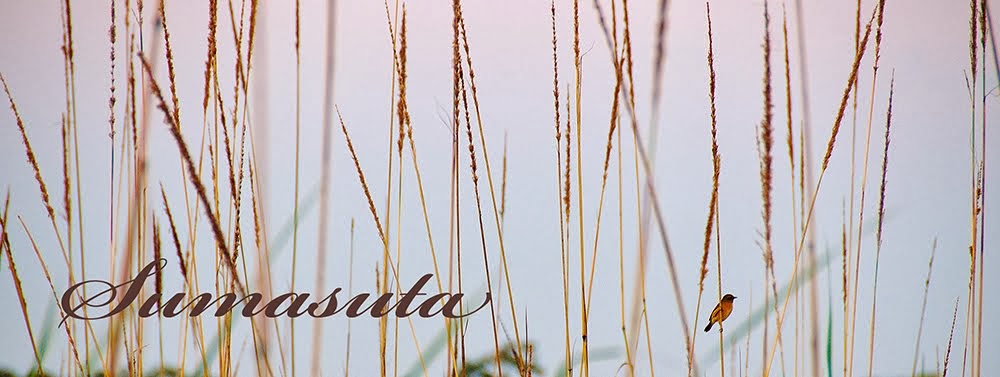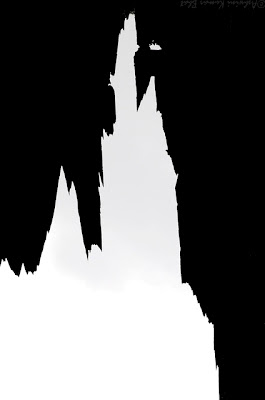"
They have arrived and this time we have to make it." Adithya Biloor's voice was filled with joy when he told this to me that night over the phone. It was the mid of monsoon and in that part of the Western Ghats the monsoon is ruthless.
On the backwaters of Linganamakki Dam which is built across river Sharavati, there are plenty of very interesting places to photograph. Some like Honnemaradu are quite familiar to people while many others are not.

This place is called Kukkana Gudda by the local people and 'Kukka' for them means the bird - whether it may be Black headed Ibis or Crested Night herons or Little or Median Egrets. They all belong to the family of 'Kukka' for them! :) And 'Gudda' means mountain (in this context it means island!).
As I was planning for three day photo trip to the places around Sirsi on the first weekend of Sept
2009, I some how had to squeeze time in between to make a trip to explore Kukkana Gudda which almost no one has photographed before. Thanks to Adithya Biloor who has arranged for a small coracle (or boat or whatever you call, as there is no English word for what is used here - "Teppa" in Kannada) and couple of Life jackets! As it takes around 45 min to reach the island on boat, where you will be sitting about 1 inch below the water level and the boat wobbling because of the heavy winds, the life jacket seemed appropriate. I wish if there were a life jacket for my camera gears as well! ;)
That day when I landed there at his place, it was slightly drizzling and the Sun was playing hide and seek behind the fast moving low level clouds indicating the unpredictability of the weather.
After spending some time in the morning in the Jungles around by trying some macro we were all set in the afternoon to head to Kukkana Gudda.

It was a slippery road which took us to a small village on the bank of backwater. The person who was supposed to take us to the island is basically a fisherman. There were couple of other houses also nearby.
After a warm greeting we directly headed towards the place where he had his coracle, placed upside down. His brother was nearby who will also be joining along with us. A single person is not enough to drive the coracle. The heavy winds will drive away the coracle in different directions and it needs some excellent skill to control it.

As soon as we stepped inside the boat I realized that we are in fact 1 or 2 inch below the water level and that made a chill to ran through my spinal chord! It was a different experience not to mention that how much scary too!
We started. Slowly but steadily we were moving. The atmosphere was promising with patches of clouds lingering around. Far distant mountains were under the black shade of rain clouds but they seemed too thick to move to us within couple of hours before which we were planning to return to the shore.

What looked like a very tiny island from the shore ,started looking like a considerable sized one. As and when we started moving closure the birds there slowly started realizing that they have guests!
Unlike other heronaries like Gudvi or Ranganatittu, the birds here are not get used to people. So they started becoming alert as our coracle approached nearer.

There were Black Headed Ibis, Median Egrets, Little Egrets, Crested Night Herons, Little Cormorant, and Pond herons and all in good numbers. The habitation was consisting of shrubby and thorny bushes which was providing a nice canopy for the birds to breed.

We slowly circled the island sitting on the coracle. Never got down from it because of the fear of disturbing the birds too much. Slowly they seemed to be accepting our presence and started to returning to their ground.

As it is the backwater, there are several dead tree tops which are buried underwater several years ago. The birds which take off will find that place convenient to sit. It provided some nice photographic opportunity.


The photography was tough because of the speedy winds and wobbling boat and no hard surface to stand.

After spending around 30 min around the island we thought that it was time to head back as the clouds started gathering.

It was another man's turn now to row the coracle and we were all set to become drenched in rain! The thick dark clouds were gathering faster than we expected. I packed my camera inside a plastic bag along with the long lens. There was a thick plastic blanket which the fishermen use which proved useful for me. After I packed them to protect from rain, I started enjoying the showers sitting in the middle of the water.

By the time we reached the shore the rain had disappeared again. The air was clean and the visibility was clear. We could still see the island clearly from the shore...The birds were now calm and on their routine.
Their guests are gone.
Cheers,
Ash




















